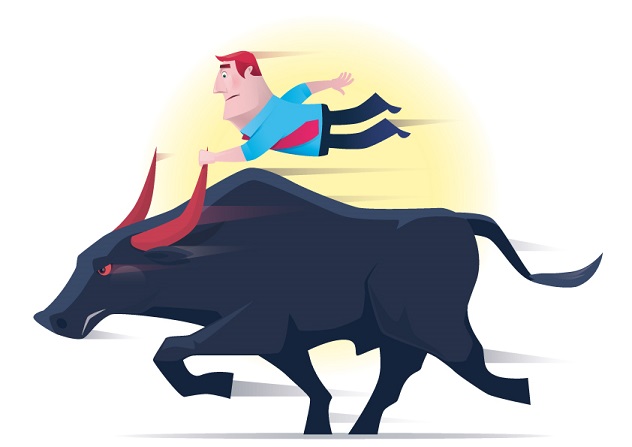“Speculators may do no harm as bubbles on a steady stream of enterprise. But the position is serious when enterprise becomes a bubble on a whirlpool of speculation.” – John Maynard Keynes
Always there are optimistic bulls and pessimistic bears in the stock market. But it is a rare situation when the incorrigibly optimistic bulls turn cautious due to excessive valuations while many convinced bears remain fully invested. This is the situation now in stock markets globally where the bull is running on steroids. Many reputed market gurus are sounding alarm about a possible big market crash.
Warnings from the gurus
Ray Dalio, the legendry investor and founder of the largest hedge fund ‘Bridgewater Associates’, said in March 2021: ”By our measure the bubble is not what it was in 2000 or 1929. But it’s kind of like half way there.” Michael Burry, the closely followed hedge fund manager famous for shorting the 2007 mortgage bond market, described the state of markets as the “greatest speculative bubble of all time in all things.“ Stanley Druckenmiller, the famous billionaire hedge fund manager, said in May that the current market reminded him about the dot-com bubble. Jeremy Grantham, the much-respected British investor, describes the market as a “full-fledged epic bubble.” Even though the ‘Oracle of Omaha’ has not yet expressed his views on the current state of the market, the Buffet Indicator, the ratio of market cap to GDP, at 205 percent is flashing red. In India, the RBI in its FY21 Annual Report warned about a possible stock market bubble. But, undeterred by these warning signals, the bull is charging, and the newbie retail investors are merrily chasing meme stocks.
Valuations are frothy, but there are no signals of a crash yet
An interesting feature of the current market scenario is that most of the pessimists have not sold out or exited from the market yet. Interestingly, some of them are fully invested. The reason is that there are no signals of an imminent market correction. The potential triggers for a sharp correction like persistent inflation, a hawkish Fed or signals of an imminent recession are conspicuous by their absence. So, it is possible that this bull may continue to charge for some more time before the bear strikes.
By all matrixes markets are over-valued
Back home in India all matrixes of valuation point to excesses. In India the long-term market to GDP ratio is around 77 percent; the long-term PE multiple is around 16 and the median Price to Book value is 3.23. Where are these valuation parameters now? Market cap to GDP is 115 percent, one-year forward PE is around 21 and Price to Book is around 4.44. All three indicators are flashing red.
Wall Street and Dalal Street are not one-way streets
A common feature of this bull market, both in the developed and emerging economies, is the rise of the newbie retail investor. This newbie trading generation has not experienced a serious bear market. Most of them, driven by a dreadful combination of market ignorance and irrational exuberance, are merrily trading in the market. They will soon realise that Wall Street and Dalal Street are not one-way streets.
Investors will gain and speculators will lose
When the inevitable bear ambush happens, the low-grade and meme stocks, which the newbie investors are chasing now, will be butchered. As Benjamin Graham famously warned, “The most realistic distinction between the investor and the speculator is found in their attitude towards stock-market movements. The speculator’s primary interest lies in anticipating and profiting from market fluctuations. The investor’s primary interest lies in acquiring and holding suitable securities at suitable prices.” When the market recoups after the crash, high-quality stocks will bounce back smartly while the ‘cats and dogs’ will disappear.
It makes sense to rebalance portfolios
With markets at record highs and valuations being excessive, it is time to exercise caution. Experience has taught us that it is difficult, almost impossible, to call the peaks and troughs of the market. But since investors are sitting on record profits, there is no harm in erring on the side of caution. It makes sense to book some profits and rebalance portfolios by slowly increasing the weightage of fixed- income assets.
Article first published in Economic Times.
